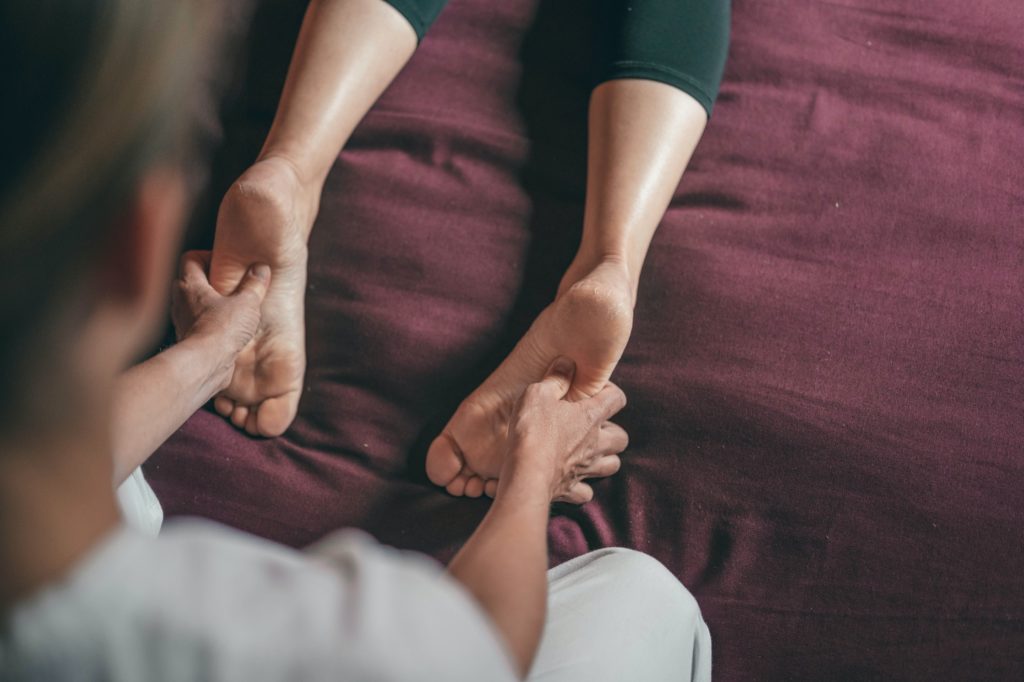
Happy Independence Day! Summer activities are in high gear…playing games, jumping, walking and running on grass, pavement and sand! And, with that, foot and heel pain is not unusual, especially for those who are not in shape, new to exercise, wear summer flats, sandals or shoes with poor support.
While man has spend thousands of years evolving to walk on two feet, some problems of bipedal weight bearing has not been worked out. Heel pain is a common complaint among adults over 40. Plantar fasciitis is the most common cause of heel pain but the diagnosis can be difficult and treatment approaches vary widely! In my experience, plantar fasciitis can be difficult to treat and the research on this condition has failed to provide sufficient evidence to determine the BEST treatment regime. Stretching, strengthening, icing, activity modification, oral and topical anti-inflammatory medications, steroid injections, orthoses, immobilization, extra-corporeal shock wave therapy, and surgery are all potential treatments mentioned in the literature. While all of these treatments have benefits, some have risks, and no single treatment has been the “proven winner”. It may be that an appropriate combination of treatments specifically tailored to the individual problem may be the best approach.
The correct diagnosis is essential. Other conditions such as tarsal tunnel syndrome, calcaneal stress fracture, and lumbar radiculopathy (sciatic nerve pain radiating down the leg) can mimic the symptoms of plantar fasciitis and must be ruled out as causes of your heel pain. People with plantar fasciitis typically report severe heel pain with the first few steps out of bed in the morning. Called “first step pain”, this classic symptom also occurs upon standing and walking after any period of recumbence such as sitting or reclining on the couch. Female gender, activities (occupational or recreational) involving prolonged periods of weight bearing (e.g. standing, walking, or running), improper foot and leg alignment, calf tightness, obesity, and age between 40 and 60 years old are factors that increase your risk of developing plantar fasciitis.
Even with the correct diagnosis, treatment of plantar fasciitis can be controversial because of differences in opinion regarding the CAUSE of plantar fasciitis. Amongst the medical community, there is continued debate about whether plantar fasciitis is an inflammatory condition of the fascia or the periosteum (i.e. the outer covering of the bone to which the fascia attaches) and whether the condition is inflammatory at all! Researchers discovered degenerative changes rather than inflammatory components in tissue samples taken from people with plantar fasciitis. Typically, treatments for degenerative and inflammatory conditions differ.
Despite the cause of plantar fasciitis, many remedies have been employed in various combinations and with varying degrees of success. First, many clinicians advocate calf and plantar fascia stretching. An inflexible calf muscle increases the tensile stress within the plantar fascia and a shortened plantar fascia, as in high arched people, builds up more tension in the heel. Also, strengthening muscles that provide dynamic support for the flat foot complements the stretching exercises. Some researchers believe that wearing shoes has made our foot muscles lazy! In addition, most practitioners consider an anti-inflammatory strategy as first-line defense and will typically prescribe an oral medication or topical application. If the pain does not respond or is severe, a steroid injection may be advised. A study from 2010 concluded that properly placed steroid injections for plantar fasciitis are safe and effective with minimal risk of complications (e.g. atrophy of the calcaneal fat pad) or fascial rupture. Moreover, because faulty foot mechanics are typically associated with plantar fasciitis, physicians and podiatrists often recommend orthotics (i.e. shoe inserts; over-the-counter or custom) and proper footwear, to either correct the mal-alignment or accommodate the deformity. Furthermore, to properly position the plantar fascia at night for optimal healing, some researchers advocate the use of a night splint to place the ankle at 90° and the toes at 30°. Finally, some stubborn cases of plantar fasciitis may require immobilization, and, as a last resort, surgery.
Despite differences, most clinicians advise stretching, strengthening, icing, orthotics, and anti-inflammatory medication as part of the initial management of plantar fasciitis. Some podiatrists recommend physical therapy so that their patients have access to all of these treatments at once, including manual techniques.
Websites: Plantar Fasciitis Night Socks: www.braceability.com www.orthoticshop.com
Source: Lower Extremity Review

NEXT MONDAY – Read Dr. Paul J. Mackarey “Health & Exercise Forum!” in the Times-Tribune.
This article is not intended as a substitute for medical treatment. If you have questions related to your medical condition, please contact your family physician. For further inquires related to this topic email: drpmackarey@msn.com
For all of Dr. Mackarey's articles visit: https: //mackareyphysicaltherapy.com/forum/
Paul J. Mackarey PT, DHSc, OCS is a Doctor in Health Sciences specializing in orthopaedic and sports physical therapy. Dr. Mackarey is in private practice in Scranton, PA. He is an associate clinical professor of medicine at GCSOM.